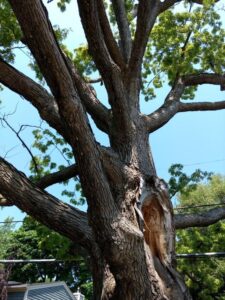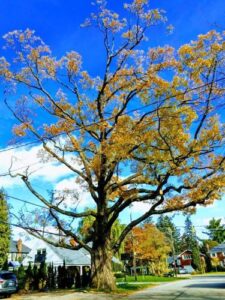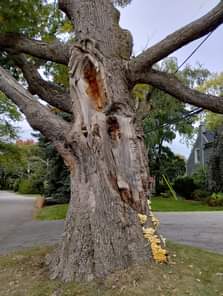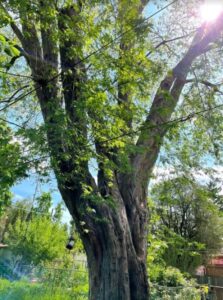One of Etobicoke’s oldest tree that lived to be 330-years-old is getting a new lease on life after being threatened by a deadly fungus.
A 330-year-old white oak dubbed the ‘Great 335 of Thorncrest,’ at Islington Avenue and Great Oak Drive, faced removal due to a Sulphur Fungus disease.
The tree faced being cut down since it posed a danger of falling and injuring someone.
Now, the City Forestry of Toronto, said they can mend the tree without taking it down.
We “feel confident that we can be successfully surgically remove the Sulphur Fungus in the infected area’ of the ancient tree, according to city official Vojka Miladinovic.
Miladinovic said the white oak was ‘inspected by staff last week and they determined that the removal of this tree is not an emergency.’
“They (staff) confirmed that the tree is in slow structural decline,” Miladinovic wrote in an e-mail to concerned residents.
“As this tree is of significance to the neighborhood and based on the inspection findings and opinions of the Area Manager and Supervisor, tree does not warrant removal at this time,” he told jubilant tree lovers.
He said a work order was created to ‘remove the large deadwood and perform minor weight reduction on south scaffold.’
Miladinovic said a large branch was broken off from a 2014 storm and there are stress cracks and decay evident.
“At root flare on east side of main stem there is active with sulfur fungus (Laetiporus Sulphureus),” he said. “Tree is still vigorous as it is building reaction wood around storm break area and healthy bud set.”
Bill Zufelt, of the History and Cultural Committee of South Etobicoke, said he was happy with the good news.
“The ‘Dr Seuss Tree’ is not ready to take a ‘bough out’ yet,” Zufelt said.
Judy Gibson, of the Long Branch Neighbourhood Tree Canopy Preservation and Enhancement Committee, said “all the more reason to preserve the magnificent oaks we have that are not affected by this fungus as well.”
Eric Davies said “it might serve as a good health metric for advanced arboricultural care.“
“Here’s hoping your fantastic work can be extended to Toronto’s other exceptional oaks,” he wrote.
The white oak is believed to have been a sapling in the 1600s growing on land leased to settler Jacob Smith in 1787 to build an inn, which was never built.
The property was rented for farming and tree was a natural landmark.



